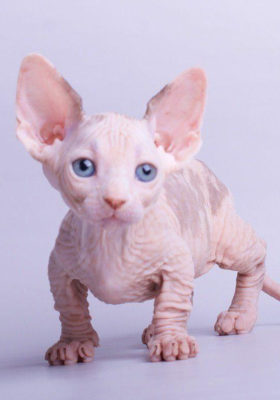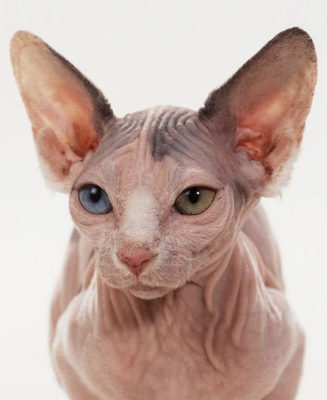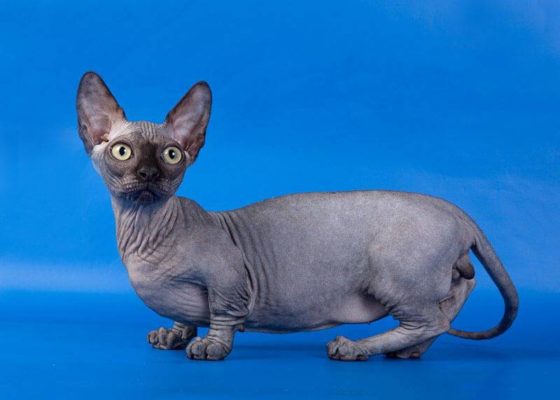Minskin
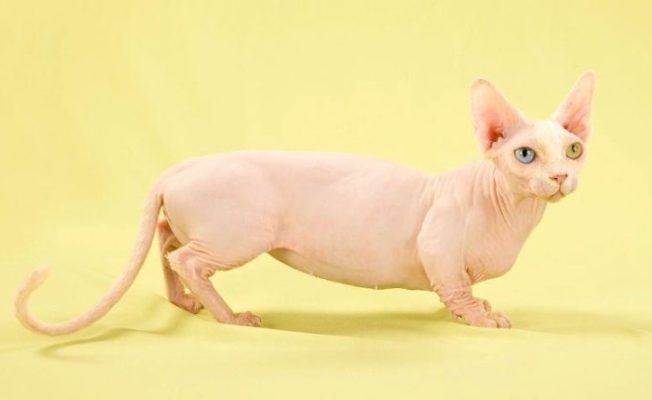
Cats of this breed are active and have a kind and gentle character. They quickly become attached to the owner and require a lot of attention. It is not recommended to leave the pet alone for a long time. Otherwise, he will get bored and become more withdrawn. For Minskin, children are indispensable companions for games. He adores them. However, it is necessary to explain to the baby how to behave properly with a cat.
Table of Contents
Breed Information
| Origin | United States |
| Size | 17-20 cm |
| Weight | Males 1.5-3 kg Females 1-2 kg |
| Fur Type | Hairless |
| Color | Tabby patterns, colors with flecks of white, tortoiseshell |
| Lifestyle | Indoors |
| Lifespan | 12-15 years |
| FIFe Classification | – |
| WCF Classification | – |
| TICA Classification | MS |
| Group | Short-haired cats, cats for kids, rare cats |
| Price | $300-700 |
Breed Photos
Origin History
The Minskin is a young breed, which began only at the end of the last century. Boston breeder Paul McSorley began breeding the Minskin in 1998. He set a goal to create a cat without hair and with short legs. To do this, he crossed a munchkin and a sphynx. The Devon Rex and Burma were also involved in the creation process.
The first Minskin kitten was born in 2000 and was named Rodri. Eight years later, the breed began to be allowed to exhibit. The cat is considered very rare; in 2012, its population numbered about a hundred individuals. The International Cat Association recognizes the Minskin as an experimental breed. Other felinological organizations have not yet recognized the pet.
Appearance
The Minskin is a bald, miniature cat. The short paws make the body appear long. The backline rises to the hips. The cat’s chest is broad. The back legs are longer than the front legs. The tail is medium length with a blunted tip. The cat’s fur is short, and creases are observed all over the body.
The neck of the Minskin is flexible, well developed. The head is wide and round. The muzzle is shortened with a strong chin and relief cheeks. The pet’s large ears are open and often completely bald. The nose is medium in size with a slight curve at the tip. The mustache is either absent or very sparse.
Character
Cats of this breed are active and have a kind and gentle character. They quickly become attached to the owner and require a lot of attention. It is not recommended to leave the pet alone for a long time. Otherwise, he will get bored and become more withdrawn.
For Minskin, children are indispensable companions for games. He adores them. However, it is necessary to explain to the baby how to behave properly with a cat. Because of the special structure of its legs, the pet should not be thrown on the floor. Minskin is not at all peculiar to aggression. The cat has no problem getting along with other animals, including dogs.
Care
Due to the lack of hair, the Minskin needs to be kept warm and protected from drafts. You can and should bathe the cat often with a special shampoo. It will not affect the skin condition but will rid the cat’s body of rashes and secretions. Just like a sphynx, the Minskin should be protected from direct sunlight.
You should brush your pet’s teeth daily. Use a special toothpaste for that. Claws should be trimmed at least once every ten days. Also, keep an eye on the cat’s eyes and ears. Wipe and clean them in time.
Education
Minskin is an intelligent pet, easy to get used to the litter box and scratching post. It is better to educate him from childhood. Early socialization is important for this cat breed.
Minskin has a fragile and delicate nature. Therefore, be patient and lenient with your pet in the process of raising him. Support him in every way and do not show excessive rudeness. Shouting will make the cat timid and withdrawn. With proper motivation, a diligent Minskin will learn all that is required of him.
Common Diseases
Because the breed is young and few, it has not been studied enough. Minskins are not in the best of health. Several genetic diseases are peculiar to them:
- lordosis (curvature in the lower back);
- chest deformity.
Also, Minskins, like their Sphynx ancestors, are susceptible to dermatological diseases. These can be avoided with proper care and nutrition. Wounds on the body of the Minskin must be treated immediately. The animal should be taken to the veterinarian regularly and vaccinated. Worming should be prevented once every three months.
Nutrition
The Minskins inherited one interesting feature from sphynxes. They eat quickly and chew their food poorly. Because of this, miniature pets should be fed more often, three to four times a day. Portions should be small. Both premium dry food and natural food are suitable as food.
In the second case, 70-80 percent of Minskin’s diet should consist of meat. It is usually lean varieties: beef, chicken, turkey. Dilute the meat products can be porridges, such as buckwheat or rice. Also, sometimes give your pet boneless saltwater fish.
Sour-milk products will not be superfluous: cheese, cottage cheese, sour milk, kefir. Do not forget about fruits, vegetables, and greens. It is categorically forbidden to give the cat-human food. She is also contraindicated to fried, salty, fatty, spicy, and floury food. Also, do not feed Minskin onions, garlic, mushrooms, sweets, legumes, milk, exotic fruits, and grapes.
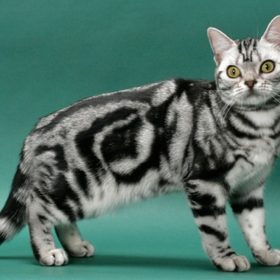 American Shorthair
American Shorthair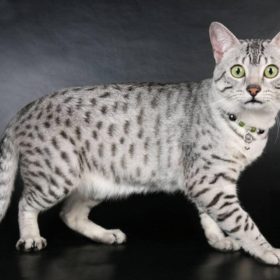 Arabian Mau
Arabian Mau Birman
Birman Burmilla Longhair
Burmilla Longhair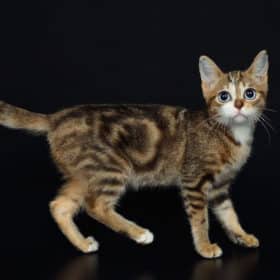 Ojos Azules
Ojos Azules Ocicat
Ocicat